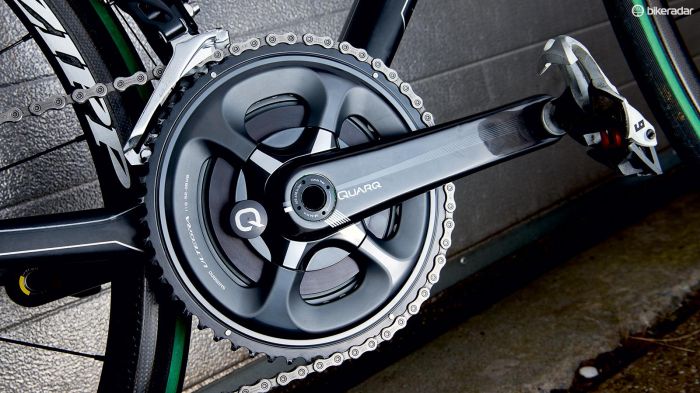You can trust Cyclingnews

This article originally appeared on BikeRadar
Quarq's Elsa RS expands on the SRAM-owned company's three existing road crank-based power meters and its two retrofittable power measuring spiders available for Specialized and Cannondale cranks. But until now, though Quarq units could be used with any drivetrain, they would only accept SRAM or SRAM-compatible chainrings. The new hollow carbon Elsa RS has been designed specifically for Shimano's current four-bolt chainrings, increasing the power measuring options for Shimano users.
- Highs: Simple, reliable and consistent
- Lows: Finish suits Dura-Ace rings better
We replaced an Ultegra 6800 crank with the Elsa RS unit, simply removing the 24mm axle adaptors to accommodate the larger BB30 axle in our frame. There's also a GXP axle version, and six crank lengths from 162.5mm to 177.5mm. Our 175mm Elsa RS weighed 623g including a spacer and preload adjuster, an increase of just 30g over the crank and adaptors we'd removed.
The original Ultegra chainrings fitted easily, although the Hollowglide outer ring isn't completely flush with a spider that seems optimised for Dura-Ace, creating a small step between the two. This had no effect at all on function though, with Shimano's typically slick changes identical to before.
Setting up the Quarq is very straightforward. A simple-to-replace CR2032 battery is already installed to power the data collection and ANT+ transmission, and your ANT+ compatible head unit's scan function should 'see' the power meter and link to it quickly. This latest design does away with a frame-mounted cadence magnet, using integrated accelerometers instead, so there's nothing else to fit. You simply start riding…
Real time response is fast, usually within two pedal revolutions, so there's a minimal lag between efforts and peak readouts. Quarq's new 'multipoint active temperature compensation' system maintains accuracy and consistency regardless of climatic changes, and throughout weeks of testing in all manner of winter road conditions, it proved to be nothing but reliable. Data comparison showed the Elsa RS had produced consistent results, most crucially, consistent with itself, since, unless you're fortunate enough to own multiple power meters, accurately comparable data within a single device is all that matters.
Accuracy is claimed to be +/- 1.5%, the battery should give about 300 hours' riding time, and crank stiffness is at least as good as the units it will replace. It's also cheaper than last year's SRAM-only Elsa R (as is this year's R).